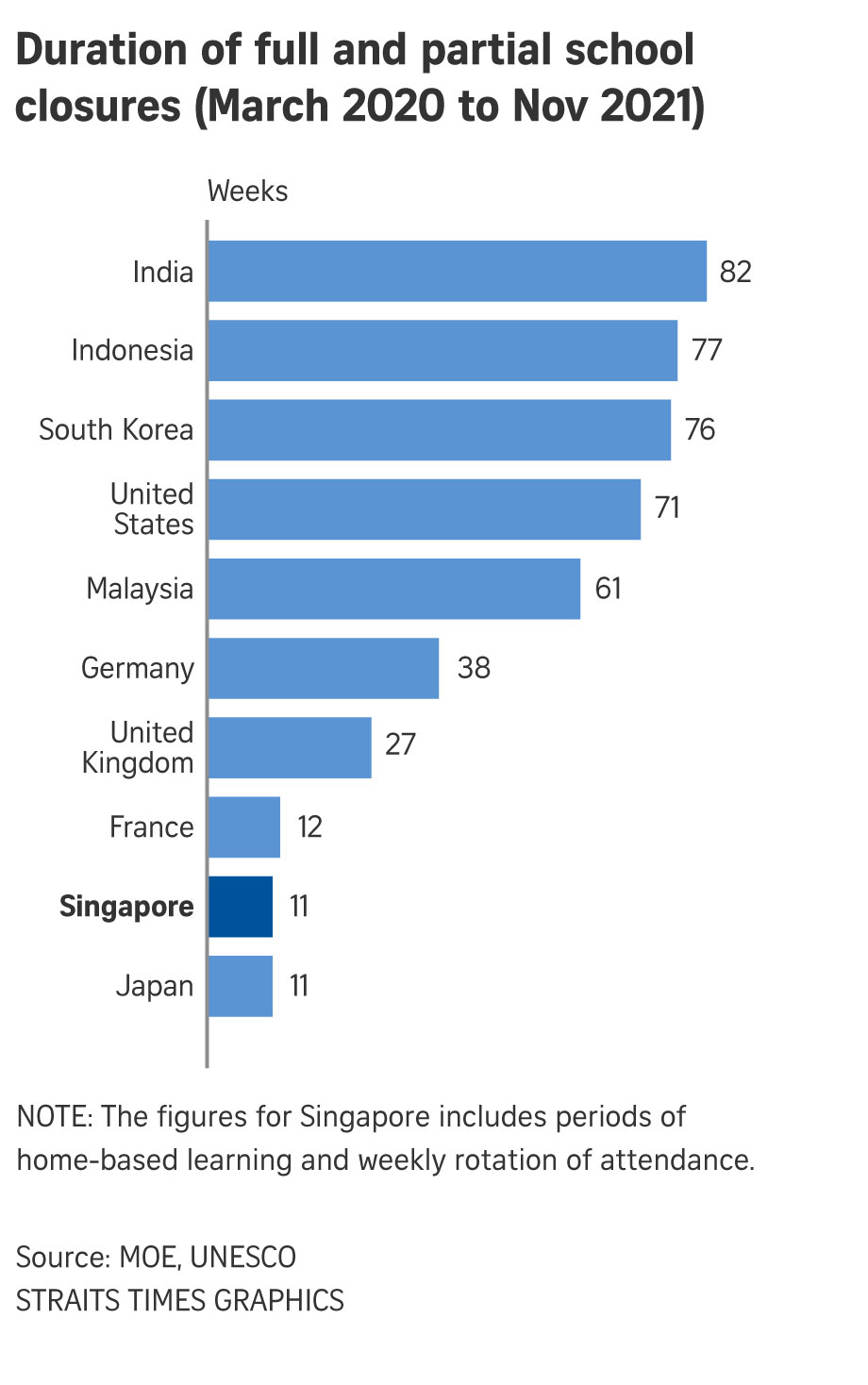Key Covid-19 Budget measures in 2020 and 2021 prevented longer-term economic scarring: MOF
Sign up now: Get ST's newsletters delivered to your inbox

Singapore is on track to close its output shortfall in 2022 based on the International Monetary Fund's October 2021 forecast.
PHOTO: ST FILE
Follow topic:
SINGAPORE - Key Covid-19 Budget measures over 2020 and 2021 have enabled Singapore to continue to expand its resident employment and reduce loss to potential economic output, said the Ministry of Finance (MOF) in a paper.
Singapore's support measures thereby helped to mitigate potential longer-term risks of the Covid-19 pandemic, preventing economic scarring and loss of human capital in the Republic.
These findings, based on a preliminary analysis of the key Covid-19 measures, were shared in MOF's assessment of the impact of Covid-19 Budget measures, which was published on Thursday (Feb 17).
The paper builds on an interim report published in February 2021.
Preliminary analysis of the key Budget measures also found that Singapore experienced limited increases in corporate and government debt, maintained the job prospects of recent graduates from institutes of higher learning, and minimised loss of schooling hours.
Broad-based social support, weighted towards lower-income groups, also helped to lessen the unequal impact of the pandemic.
The paper noted how unemployment rates can rise and remain elevated for some time during a crisis, and said this can lead discouraged job seekers to drop out of the labour force.
But Singapore has managed to avoid such a scenario thus far. Between 2019 and 2021, Singapore's resident employment rate grew by 2 percentage points.
In comparison, South Korea saw a 0.3 percentage point dip over the two years, while Germany and the United Kingdom both had a 1.3 percentage point decrease.
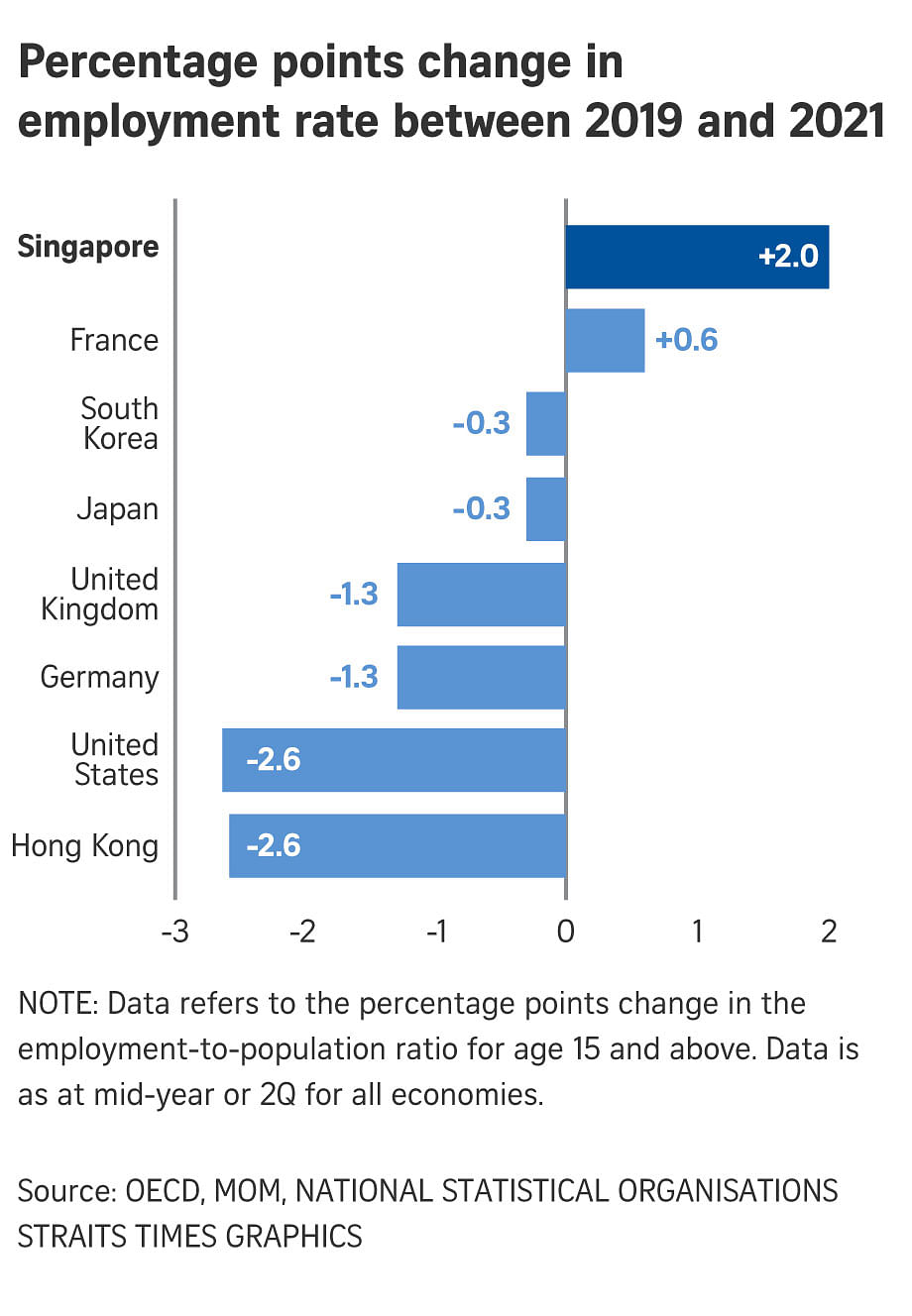
MOF highlighted two main reasons for the more favourable outcomes seen in Singapore: Labour market schemes that helped workers build capabilities, and the fact that a large part of the overall shock to employment was absorbed by the foreign workforce.
The paper also outlined how measures, intended to tide workers and businesses over the worst of the crisis and retain capabilities to enable them to seize opportunities for recovery, reduced the loss to potential output.
Singapore's economy expanded 7.6 per cent year on year in 2021, better than the Ministry of Trade and Industry's previous estimate of 7.2 per cent and reversing the 4.1 per cent contraction in 2020.
The Republic is on track to close its output shortfall in 2022 based on the International Monetary Fund's October 2021 forecast, similar to major advanced economies excluding the United States.
Output shortfall refers to the gap between the level of gross domestic product at a point in time and its forecasted level made pre-pandemic.
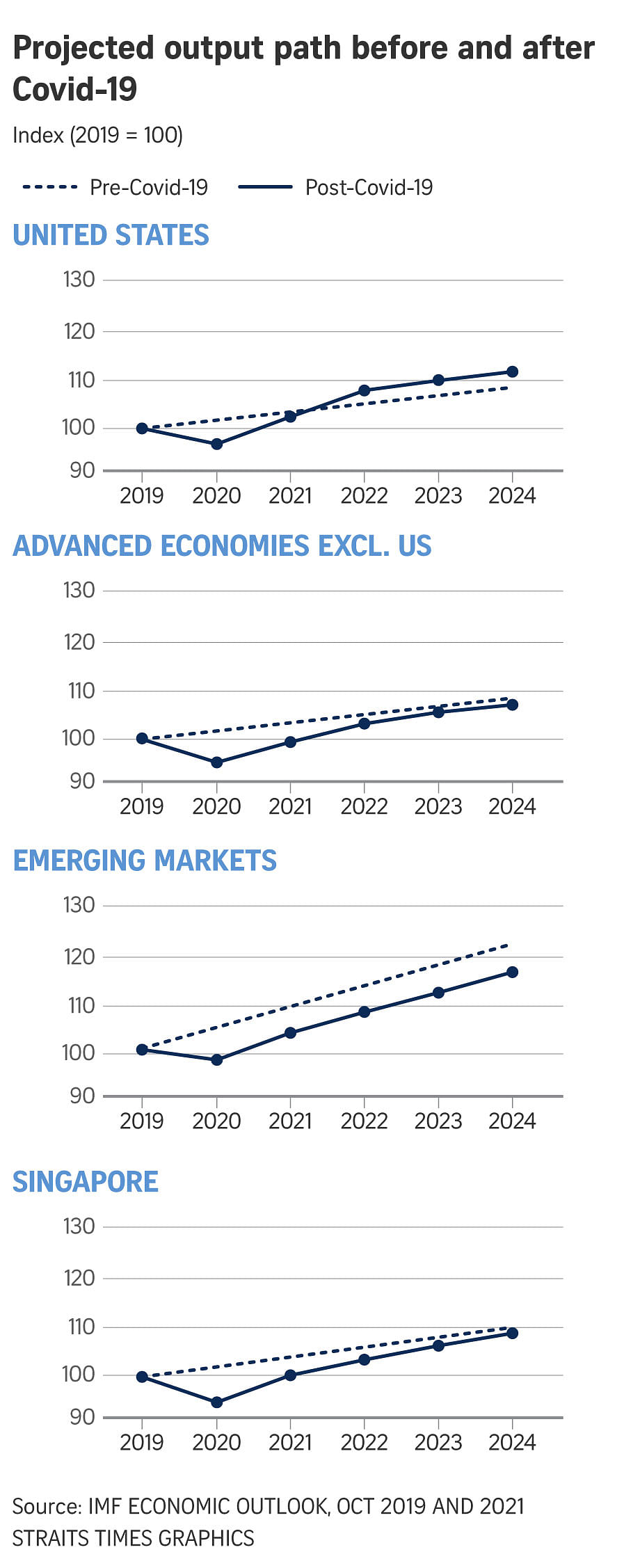
But the aviation and tourism sectors will take a longer time to recover to pre-Covid-19 output levels given the more measured reopening of travel in Asia, MOF said.
In contrast, lower state support, slower vaccine roll-out and stretched state capacity in emerging markets mean that they are expected to incur a lasting loss in output, relative to the trajectory projected pre-pandemic.
At the same time, Singapore saw a modest rise in the debt level of its non-financial corporate sector compared with many developed economies.
The overall ratio of non-performing loans among commercial banks in Singapore also remained fairly stable throughout the crisis - ranging from 2.01 per cent in the fourth quarter of 2019 to 2.71 per cent in the third quarter of 2020 and 2.26 per cent in the second quarter of 2021.
The paper noted how the median debt levels in advanced economies are now higher than the peak reached after World War II - due to the massive fiscal support from governments around the world to provide emergency Covid-19 relief.
But instead of issuing debt to finance its fiscal support, Singapore drew on its past reserves, with up to $53.7 billion set aside over the financial years of 2020 and 2021 to finance various schemes.
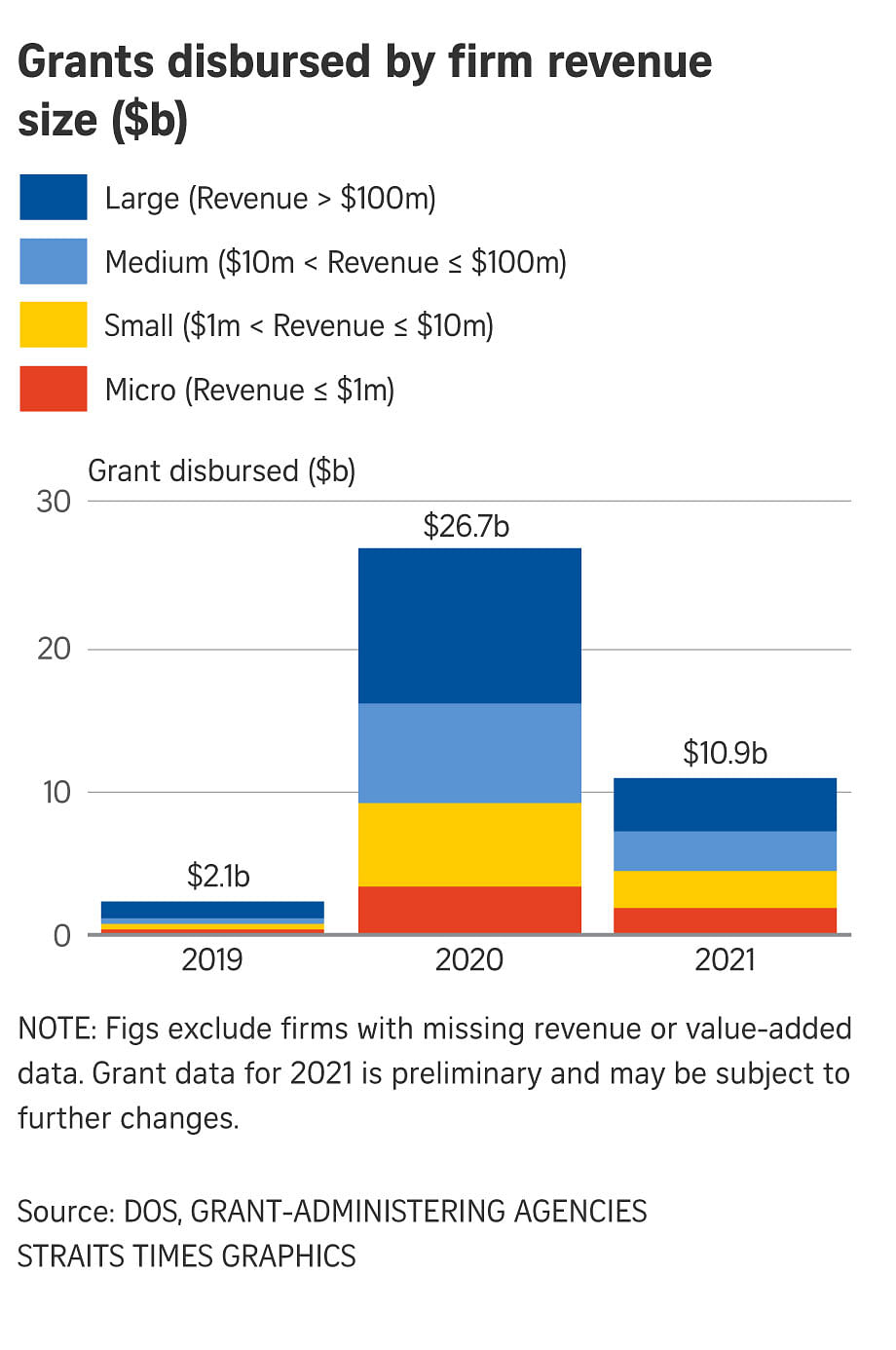
Social support to households and individuals also ensured timely relief for families in Singapore and mitigated the unequal impact of Covid-19, MOF said.
Households received about $2,200 per member on average from Covid-19 schemes in 2020, with those in the lower-income quintiles generally receiving more benefits compared with those with higher incomes.
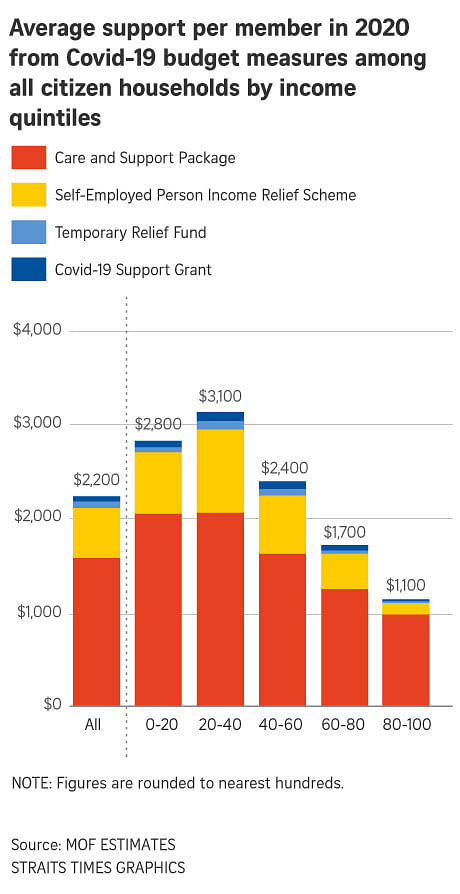
The Gini coefficient after taxes and transfers among resident employed households declined to 0.375 in 2020. It increased to 0.386 in 2021, which reflected the cessation of one-off Covid-19-related relief, but remained lower than pre-pandemic levels. The Gini coefficient measures income inequality.
Further, the overall employment rate of students who graduated from local institutes of higher learning in 2020 were found to be comparable with those who graduated in 2018 and 2019, cushioned by support measures such as the SGUnited Traineeships Programme, which provides traineeship opportunities of up to six months.
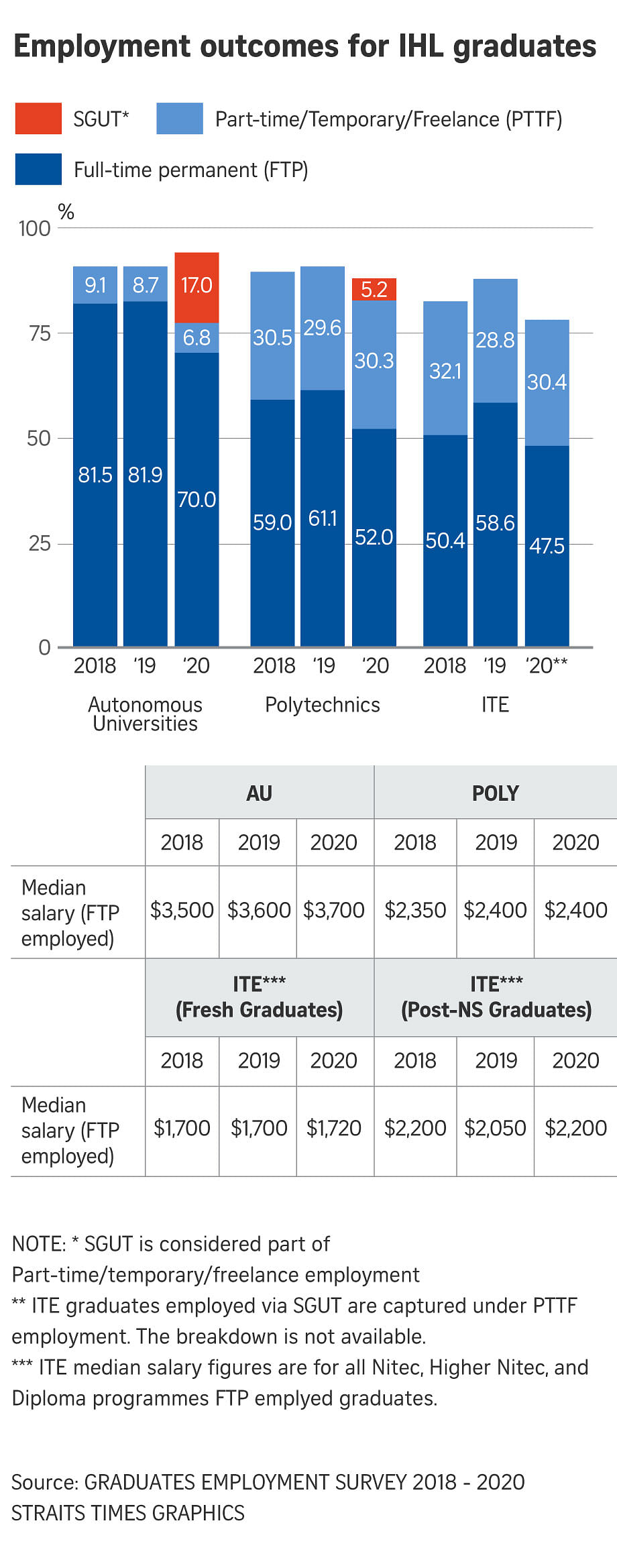
Median salaries for graduates in 2020 remained comparable with 2019 as well.
But the slower recovery in the aviation and tourism sectors weighed more heavily on graduates from polytechnics and the Institute of Technical Education, as a higher proportion of their students took up disciplines related to these sectors worst hit by Covid-19 before the pandemic.
Singapore also saw a shorter duration of full and partial school closure - 11 weeks - from March 2020 to November 2021, compared with other countries. This was as the country took the decision to minimise disruptions to in-person learning, especially for younger students.
In comparison, schools in the United Kingdom were fully or partially shut for 27 weeks, while those in the United States were closed for 71 weeks.
The overall performance of Singapore students in national examinations during the Covid-19 period was comparable with that of previous years, the report noted.
